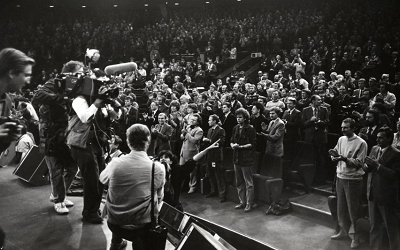 Estonian Centre Party is a voluntary political union of the state citizens. A great number of us came to the politics through the Estonian Popular Front. We were united as a political party in 1991. We have defended and called to life our policy; and sought and found political solutions that have helped Estonian society to join the family of other democratic countries without human casualties and bloodshed. We share common goals for humanity and want to ensure security for Estonian people through political decisions and democratic reforms both in Estonia and in the world.
Estonian Centre Party is a voluntary political union of the state citizens. A great number of us came to the politics through the Estonian Popular Front. We were united as a political party in 1991. We have defended and called to life our policy; and sought and found political solutions that have helped Estonian society to join the family of other democratic countries without human casualties and bloodshed. We share common goals for humanity and want to ensure security for Estonian people through political decisions and democratic reforms both in Estonia and in the world.
The re-established Independence of Estonia in 1991 created implications for the formation of a citizen society and a democratic state based on the rule of law. A foundation was laid for further progress in 2004 when Estonia joined the European Union.
1995
In the parliamentary elections the Centre Party was placed third with 14.2% of votes and 16 seats. It entered the coalition, Savisaar taking the position of the Minister of Internal Affairs, and 4 other ministerial positions (Social Affairs, Economy, Education and Transportation & Communications). Edgar Savisaar became the Chairman of the City Council of the capital city Tallinn.
1999
In the parliamentary elections the Centre Party gained 23.4% of votes (the first result) and 28 seats in the Riigikogu. CPE members are active in its 26 branches – eight of them are active in Tallinn, 18 in towns and counties.
2001
Party leader Edgar Savisaar was the Mayor of Tallinn, the capital of Estonia (from 2001 to fall 2004)
2002
Centre Party and the Estonian Reform Party formed a new governmental coalition where Centre Party got 8 ministerial seats (Minister of Defense, Education, Social Affairs, Finances, Economy & Communications, Interior, Agriculture and Minister of integration and national minorities).
2003
The Centre Party became a member of the Alliance of Liberals and Democrats for Europe Party (then known as the European Liberal Democrat and Reform Party) at the organisation's July 2003 London Congress. 2004 Centre Party gained one member in the European Parliament – Siiri Oviir. The Centre Party gathered 17.5% share of votes on the elections to the European Parliament. Oviir joined the Alliance of Liberals and Democrats for Europe (ALDE) Group.
2005
The Centre Party participated in government with the Estonian Reform Party and the People's Union of Estonia from 12 April 2005 until a new government took office after the March 2007 elections. The Centre Party had 5 minister portfolios (Minister of Economy, Minister of Social Affairs, Education, Culture and Interior).
Local elections on 16 October were very successful. Managed to win 32 seats out of 63 in Tallinn City Council, having now an absolute majority in that municipality.
Centre Party formed one-party government in Tallinn led by Jüri Ratas, he elected the Mayor of Tallinn in November 2005. The Centre Party is also a member of coalitions in 15 other major towns of Estonia like Pärnu, Narva, Haapsalu and Tartu.
2007
In the parliamentary election, the party took 29 seats. Centre Party is now the second largest party in Parliament and the largest opposition party.
2009
In the European Parliament elections, the Centre Party gained the most votes and 2 out of 6 Estonian seats, which were filled by Siiri Oviir and Vilja Savisaar.
In local elections, the party strengthened its absolute majority in the Tallinn city council.
2013
In the local elections of 20 October 2013, the Center Party and leader Edgar Savisaar were successful, obtaining the absolute majority in the city of Tallinn with 53% of votes, winning 46 seats out of 79 (2 more than the 2009 results), considerably more than the second party, the Pro Patria and Res Publica Union, which received 19% of votes and 16 seats.
2014
Centre Party gained one member in the European Parliament – Yana Toom
2015
In the 2015 parliamentary election held on 1 March 2015, the Centre Party received 24.8% of the vote and 27 seats in the Riigikogu. Centre Party is still the second largest party in Parliament and the largest opposition party.
2016
The Centre Party chairman from November is Jüri Ratas.
In November due to internal struggle, coalition talks began between Centre Party, Social Democratic Party and Pro Patria and Res Publica Union. On 19 November, the three parties agreed on the conditions of the new coalition led by Ratas. Ratas was sworn in as the Prime Minister of Estonia on 23 November.

 In English
In English  Eesti keeles
Eesti keeles  На русском
На русском 